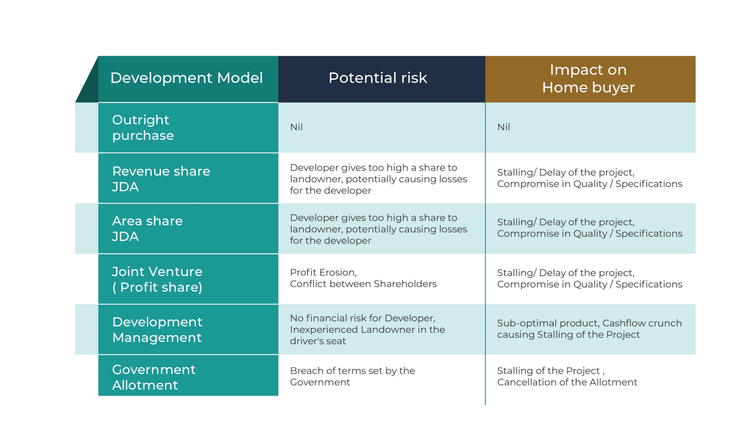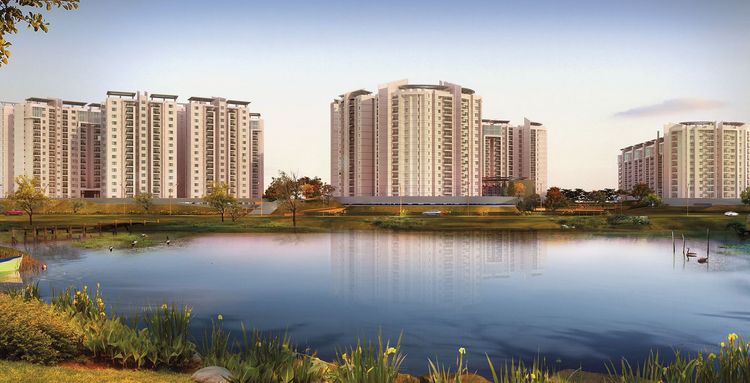When I led Land acquisition at Godrej Properties, the joke in my social circles was that I was a goon using muscle power to grab lands from the Farmers! Fortunately, the only muscles we used were the power of the Brand, our balance sheet and our expertise. This is true for 90% of the Developers today. The standard models in which lands are acquired by today’s developers are :
1) Outright purchase - This is a simple Buyer – Seller transaction. The Developer makes an offer to a landowner either directly or through Intermediaries, there is a certain amount of negotiation, a term sheet followed by Due Diligence. On successful completion of the DD, the Developer makes the payment to the landowner and execute a Sale Deed which is registered at the Sub-Registrar office. Very often, there is a payment plan agreed to, wherein the developer makes a partial payment and both parties enter into an Agreement to Purchase/Sell with certain time bound milestones for closure of the transaction.
2) Joint Development - There are 2 types of Joint Development Agreements.
a) Area Share JDA – In this model the 2 parties enter into an agreement wherein the Landowner is lieu of providing the land for development, gets a share of the total Built Up area in the project on completion. Their share is typically identified post the plan sanction, and is called the ‘Landowner’s Area Share’. This is typically captured in an Area sharing agreement. There are certain conditions basis which the landowner can sell his share to home-buyers, such as; Minimum selling price ( to prevent undercutting of the Developer’s price), Sale through the Developer’s sales channels only ( A Fee is applicable), or sale post completion of the project. The entire cost of the development is borne by the Developer.
b) Revenue Share JDA - In this model the 2 parties enter into an agreement wherein the Landowner in lieu of providing the land for development, gets a share of the total revenues generated in the project. This share is negotiated and agreed and the payments are made through an escrow system set up for this purpose. The entire cost of the development is borne by the Developer.
In Revenue share deals, the Developer typically makes an payment of 10-15% of the Land value either a Refundable deposit or Non-refundable payment at the start of the project.
3) Joint Venture – This model is different from the JDA model as in this case, the Profits of the project are shared by the Developer and the Landowner. The Developer is responsible for the execution and sales of the project. Typically the project is developed in a SPV (Special Purpose Vehicle) where both Parties are Shareholders. The residual profits in this SPV is distributed between the Shareholders. The construction Funds are raised by the SPV basis the business plan and the mortgage of the property.
This model is riskier for a landowner given that he partakes in the expenses of the project. The reason Landowners opt for this model are typically to enjoy a higher upside (as they have a higher % share compared to JDA) or if the Developer is given a disproportionate amount of Deposit / Payout at the start of the project to the landowner.
4) Development Management - This model is something which works well for Branded Developers. The premise is that the Landowner is the Developer of the project and has hired the Development Manager (Branded Developers) to assist in the branding, marketing, sales and construction of the project. All the Funds are raised by the landowner and financial closure is critical in this model to ensure the project does not stall during development for the lack of funds.
The landowner takes the highest risk in this model, but also enjoys the highest returns as he only has to pay a fee to the Branded Developer. This model however has a higher risk profile from a homebuyer’s perspective, given that the Brand has no financial exposure in the project and hence might not be motivated to complete on time and in an efficient manner compared to projects developed in the other models. Also, given that the landowner is inexperienced in development, but is in the driver’s seat, there are chances of sub optimal decision making which could result in Quality issues or delay / stalling of the project.
5) Allotment from Government – This is very prevalent in the Northern States of India and Hyderabad. There are instances of the same in Bangalore, Chennai and other cities too. In this model, the Government allots or auctions properties to either boost rapid development or to create planned developments with the right infrastructure in place. The Developers have to apply for allotments or participate in the auctions and comply with the norms of the process.
Many a times, the land is allotted with certain conditions which the developer has to comply with. These could be with respect to; class of housing to be built, timelines, budgets, additional sharing of revenues with the Government etc. Breach of these gives the authorities the right to cancel the approvals and in extreme cases, take back the land parcel. This causes undue hardship for Homebuyers who have invested in such projects.
So if you are buying a home, do check under which model the project is being developed and take a prudent call basis the Developer profile, stage of the project and proper due diligence on the title of the project.







